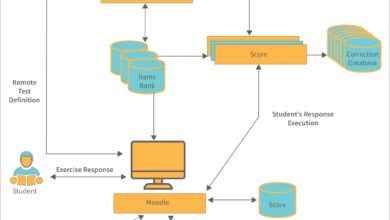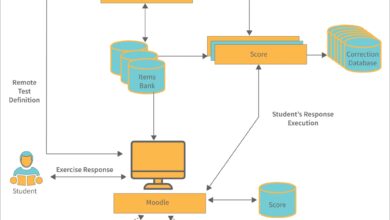System Design Interview: 7 Ultimate Secrets to Crush It
Landing your dream tech job? Mastering the system design interview is non-negotiable. It’s not just about coding—it’s about thinking big, scaling smart, and impressing senior engineers with your architectural instincts. Let’s dive in.
What Is a System Design Interview?

A system design interview evaluates your ability to design scalable, reliable, and maintainable systems from scratch. Unlike coding interviews that focus on algorithms, this round tests how you approach complex real-world problems—like building Twitter, designing a URL shortener, or architecting a global video streaming platform.
Core Objectives of the Interview
The primary goal isn’t to get one “correct” answer but to assess your thought process, trade-off analysis, and communication skills. Interviewers want to see how you break down ambiguity, ask clarifying questions, and evolve a basic design into a robust solution.
- Evaluate problem-solving under constraints
- Test knowledge of distributed systems and scalability
- Assess communication and collaboration skills
“It’s not about memorizing architectures—it’s about learning how to think like a systems engineer.” — Alex Xu, author of System Design Interview – An Insider’s Guide
How It Differs From Coding Interviews
While coding interviews are precise and have definitive right-or-wrong answers, system design interviews are open-ended. You won’t write perfect code here; instead, you’ll sketch high-level components, discuss data flow, and justify technology choices.
- Coding interviews: focused on time/space complexity and correctness
- System design interviews: focused on trade-offs, scalability, and system behavior at scale
For deeper insights, check out Grokking the System Design Interview by Design Gurus, a widely recommended resource.
Why System Design Interview Matters in Top Tech Companies
If you’re aiming for FAANG (Facebook, Amazon, Apple, Netflix, Google) or high-growth startups, acing the system design interview is often the make-or-break step for mid-to-senior level roles. These companies operate at massive scale—millions of users, petabytes of data, global latency concerns—and they need engineers who can design systems that handle that load.
Role in Engineering Hiring Pipelines
At companies like Google and Amazon, the system design interview typically comes after the coding rounds and before the behavioral or hiring committee review. For positions above L4 (in Google’s grading), it carries significant weight because senior engineers are expected to lead design discussions and own system architecture.
- Junior roles: light system design or object-oriented design
- Mid-level: moderate complexity (e.g., design a chat app)
- Senior roles: deep dives into distributed databases, caching strategies, and fault tolerance
Real-World Impact of Poor Design
A flawed system design can lead to downtime, data loss, poor user experience, and costly rewrites. Consider the 2021 Facebook outage caused by BGP and DNS misconfigurations—a real-life example of how critical proper system design is.
- Cost of downtime: ~$150M/hour for Meta platforms
- User trust erosion after repeated failures
- Technical debt accumulation from rushed designs
Understanding these stakes helps candidates appreciate why interviewers probe deeply into consistency models, replication strategies, and failure modes during a system design interview.
Key Skills Evaluated in a System Design Interview
Success in a system design interview hinges on mastering several interconnected domains. It’s not enough to know buzzwords like “microservices” or “Kafka”—you must understand when and why to use them.
Scalability and Load Handling
Can your system handle 10x traffic tomorrow? Interviewers expect you to discuss horizontal vs. vertical scaling, load balancing techniques (round-robin, least connections), and how to decouple components using message queues.
- Use CDNs for static content delivery
- Implement auto-scaling groups based on CPU/memory usage
- Leverage sharding to distribute database load
For example, when designing a service like Instagram, you’d need to explain how photo uploads are routed, stored, and served globally using edge servers and object storage like S3.
Data Modeling and Storage Decisions
Choosing between SQL and NoSQL isn’t arbitrary. In a system design interview, you must justify your choice based on access patterns, consistency needs, and scalability goals.
- Use relational databases (PostgreSQL, MySQL) for ACID transactions
- Opt for NoSQL (DynamoDB, Cassandra) for high write throughput and partition tolerance
- Consider time-series databases (InfluxDB) for monitoring data
“The database is the backbone of any system. Get this wrong, and everything crumbles.” — System Architect, Netflix
Availability, Reliability, and Fault Tolerance
Downtime is unacceptable in modern systems. You should be able to discuss redundancy, replication, failover mechanisms, and monitoring.
- Replicate data across availability zones
- Use circuit breakers to prevent cascading failures
- Implement health checks and automated recovery
For instance, in designing a payment processing system, you’d emphasize idempotency, transaction logs, and eventual consistency to ensure no money is lost during outages.
Step-by-Step Framework for Tackling Any System Design Interview
Having a repeatable framework is crucial. Without structure, even knowledgeable candidates falter. Follow this proven 6-step approach to confidently navigate any system design interview question.
Step 1: Clarify Requirements (Functional & Non-Functional)
Never jump into design immediately. Start by asking questions:
- Who are the users? (e.g., mobile app, web, API clients)
- What are the core features? (e.g., post tweets, follow users, view timelines)
- What are the performance expectations? (latency, throughput)
- Any compliance or security constraints? (GDPR, HIPAA)
Example: If asked to design Dropbox, clarify whether we’re supporting file sharing, versioning, collaboration, or offline sync.
Step 2: Estimate Scale (Traffic, Storage, Bandwidth)
Back-of-the-envelope calculations show you think quantitatively. Estimate:
- Daily active users (DAU)
- Requests per second (RPS)
- Storage growth per day/year
- Bandwidth consumption (upload/download)
For a Twitter-like system with 300M DAUs:
- Assume 20% post daily → 60M tweets/day
- ~700 RPS (60M / 86400 seconds)
- Each tweet ~140 bytes → ~8.4 GB/day
These numbers guide your storage and caching decisions later.
Step 3: Define API Contracts
Sketch high-level REST or gRPC endpoints. This shows you think about interfaces before implementation.
POST /tweet {"text": "..."}GET /timeline?user_id=123GET /feed?user_id=123
Clearly define request/response formats and error codes. This step also helps identify key entities early.
Step 4: Sketch High-Level Architecture
Draw a block diagram with major components:
- Client (web/mobile)
- Load balancer
- Application servers
- Database(s)
- Cache (Redis/Memcached)
- Message queue (Kafka/RabbitMQ)
- Object storage (S3)
Label data flows and interactions. Use simple boxes and arrows—no need for UML perfection.
Step 5: Drill Into Core Components
Now dive deeper into critical parts:
- How is the feed generated? (Push vs. Pull model)
- How are files stored and retrieved? (Chunking, deduplication)
- How is search implemented? (Inverted index, Elasticsearch)
Discuss trade-offs: e.g., push model gives faster reads but slower writes; pull model is the reverse.
Step 6: Address Scalability & Bottlenecks
Anticipate future issues:
- What happens if traffic spikes 10x?
- How do you shard the database?
- Can the system recover from node failures?
Suggest optimizations: caching strategies, database indexing, read replicas, CDN usage.
A comprehensive guide to this framework can be found in Donne Martin’s System Design Primer, a free GitHub repository with thousands of stars.
Common System Design Interview Questions and How to Approach Them
Certain problems appear repeatedly across companies. Familiarity with these classics gives you a strategic edge. Let’s explore a few with solution strategies.
Design a URL Shortening Service (Like Bitly)
This is a favorite due to its manageable scope and rich design surface.
- Requirements: generate short codes, redirect users, track clicks
- Estimate: 500M short URLs, 1k RPS
- API:
POST /shorten {"url": "..."},GET /:code
Design considerations:
- Use base62 encoding for short codes (a-z, A-Z, 0-9)
- Store mappings in a distributed key-value store (e.g., DynamoDB)
- Cache hot URLs in Redis for low-latency redirects
- Use consistent hashing for sharding
Advanced: discuss preventing spam, custom slugs, and expiration policies.
Design a Chat Application (Like WhatsApp)
This tests real-time communication, persistence, and synchronization.
- Features: 1:1 messaging, group chats, delivery/read receipts
- Scale: 1B users, 10M concurrent connections
- Latency: sub-second message delivery
Architecture:
- Use WebSockets or MQTT for persistent connections
- Message brokers (Kafka) for durability
- Presence service to track online status
- End-to-end encryption using Signal Protocol
Challenges: handling offline messages, syncing across devices, avoiding message loss.
Design a Streaming Platform (Like Netflix)
This is complex but common for senior roles.
- Content ingestion pipeline for encoding videos
- CDN integration for global delivery
- Adaptive bitrate streaming (HLS/DASH)
- User recommendations using ML models
Key decisions:
- Store video chunks in S3 or GCS
- Use CloudFront or Akamai for caching
- Track viewing progress in a scalable database
- Implement A/B testing for UI personalization
For more examples, visit Byte by Byte’s System Design Guide, which breaks down patterns with code and diagrams.
Tools, Technologies, and Patterns Frequently Used in System Design
Knowing the right tools—and when to use them—is half the battle in a system design interview. Interviewers expect familiarity with industry-standard technologies and architectural patterns.
Databases: SQL vs NoSQL Trade-offs
Understanding when to pick each is critical.
- SQL (MySQL, PostgreSQL): best for structured data, complex queries, and strong consistency
- NoSQL (MongoDB, Cassandra): ideal for unstructured data, high write throughput, and horizontal scaling
Hybrid approach: use both! E.g., PostgreSQL for user accounts, Cassandra for activity logs.
Caching Strategies to Reduce Latency
Caching is one of the most effective performance optimizations.
- Client-side caching (browser, app)
- CDN caching for static assets
- In-memory caches (Redis, Memcached) for dynamic content
Patterns:
- Cache-aside (lazy loading)
- Write-through (data written to cache and DB)
- Write-behind (asynchronous writes to DB)
Example: In a social feed, cache the top 10 posts for each user to avoid recomputing on every request.
Message Queues and Event-Driven Architecture
Decoupling services improves resilience and scalability.
- Kafka: high-throughput, durable, supports replay
- RabbitMQ: flexible routing, easier to manage
- Amazon SQS: managed, serverless option
Use cases:
- Send emails asynchronously
- Process image uploads
- Trigger analytics pipelines
Event sourcing and CQRS (Command Query Responsibility Segregation) are advanced patterns worth mentioning in senior-level system design interviews.
How to Prepare for a System Design Interview: A 30-Day Plan
Preparation is everything. Unlike coding, system design knowledge is broad and conceptual. A structured plan ensures you cover all bases without getting overwhelmed.
Week 1-2: Build Foundational Knowledge
Focus on core concepts:
- Read: Designing Data-Intensive Applications by Martin Kleppmann (chapters 1–9)
- Study: CAP theorem, consensus algorithms (Paxos, Raft), replication, partitioning
- Watch: MIT 6.824 Distributed Systems lectures (available free online)
Resources:
Week 3: Practice Common Problems
Apply theory to practice:
- Solve 3-5 system design problems weekly
- Use the 6-step framework consistently
- Record yourself explaining designs (improves communication)
Target problems:
- Design Twitter
- Design a rate limiter
- Design a distributed cache
Use platforms like Pramp or Interviewing.io to get peer feedback.
Week 4: Mock Interviews and Refinement
Simulate real conditions:
- Do 2-3 mock interviews with experienced engineers
- Get feedback on clarity, depth, and structure
- Refine your whiteboard diagramming style
Join communities:
- Reddit r/systemdesign
- LeetCode system design discussion threads
- Discord groups focused on FAANG prep
Remember: repetition builds confidence. The more you practice, the more natural the flow becomes during the actual system design interview.
What is the most common mistake in a system design interview?
Jumping into design without clarifying requirements. Candidates often assume features or scale, leading to over-engineered or inadequate solutions. Always start by asking questions about user needs, traffic patterns, and constraints.
How long should I spend on each part of the interview?
Aim for: 5 mins on requirements, 5 mins on estimation, 10 mins on API and high-level design, 15 mins on deep dives, and 5 mins on scalability. Adjust based on the 45-minute window.
Do I need to know specific cloud services (AWS, GCP)?
Yes, familiarity with core services (EC2, S3, Lambda, CloudFront, RDS) is expected, especially for senior roles. However, focus on concepts first—interviewers care more about architectural thinking than brand names.
Is system design important for junior engineers?
Less so, but still relevant. Junior candidates may face simpler versions (e.g., object-oriented design or basic API design). As you grow, system design becomes increasingly central to your role.
Can I use diagrams during the interview?
Absolutely. In fact, you’re expected to draw block diagrams. Use clear labels, show data flow, and iterate as you refine your design. On virtual interviews, use tools like Excalidraw or Miro.
Mastering the system design interview is a journey, not a sprint. It combines technical depth, structured thinking, and clear communication. By understanding the goals, practicing common problems, and internalizing key patterns, you position yourself not just to pass the interview—but to become the engineer who designs the next generation of scalable systems. Stay curious, keep learning, and remember: every great architect started where you are now.
Further Reading:









